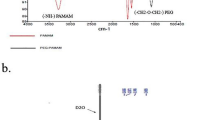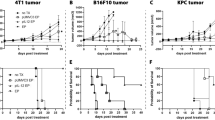Abstract
The HER-2/neu proto-oncogene is frequently amplified or overexpressed in human breast and ovarian cancers, and is significantly correlated with shorter survival. We have previously reported that the adenovirus type 5 early region 1A (E1A) gene product can repress HER-2/neu overexpression by repressing HER-2/neu promoter activity, and suppress the tumorigenic potential of HER-2/neu-overexpressing ovarian cancer cells. To examine E1A tumor suppressor function in breast cancer, we transduced E1A in vitro by adenovirus into both HER-2/neu-overexpressing and low expressing human breast cancer cell lines. In HER-2/neu-overexpressing cells, E1A greatly inhibited tumor cell growth in vitro. However, in HER-2/neu low expressing cancer cell lines, E1A had no significant effect on cell growth in culture medium. To test the therapeutic efficacy of E1A, we used both adenovirus-mediated and cationic liposome-mediated E1A gene delivery systems in an orthotopic breast cancer animal model. An advanced breast cancer model was established by inoculation of HER-2/neu-overexpressing human breast cancer cells in mammary fat pad and treated by local injections of either replication-deficient adenovirus expressing E1A, Ad.E1A(+) or a liposome-E1A DNA complex. As controls, mice bearing tumors were also treated with Ad.E1A(−) which is virtually the same adenovirus as Ad.E1A(+) except that E1A is deleted, a liposome-E1A frame-shift mutant DNA complex, or just PBS. In mice bearing a HER-2/neu-overexpressing breast cancer cell line, E1A delivered either by adenovirus or liposome significantly inhibited tumor growth and prolonged mouse survival compared with the controls. In fact, 60 – 80% of E1A-treated mice lived longer than 2 years versus only 0 – 20% of control mice (P<0.05). Western blot analysis showed that E1A protein was expressed in tumor tissue and immunohistochemical analysis showed that HER-2/neu p185 protein expression was suppressed. Taken together, our results indicated that both adenovirus and cationic liposome delivery systems were effective in transfering E1A gene for tumor suppression in a HER-2/neu-overexpressing breast cancer model.
This is a preview of subscription content, access via your institution
Access options
Subscribe to this journal
Receive 50 print issues and online access
$259.00 per year
only $5.18 per issue
Buy this article
- Purchase on Springer Link
- Instant access to full article PDF
Prices may be subject to local taxes which are calculated during checkout
Similar content being viewed by others
Author information
Authors and Affiliations
Additional information
This research was supported by DHHS Grants R01-CA58880 and R01-CA60856, Army Breast Cancer Grant 17-94-J4315, Nelly Connally Breast Cancer Fund (to M-C Hung), CA59327, CA64654, DK44935 and HL50256 (to L Huang)
Rights and permissions
About this article
Cite this article
Chang, J., Xia, W., Shao, R. et al. The tumor suppression activity of E1A in HER-2/neu-overexpressing breast cancer. Oncogene 14, 561–568 (1997). https://doi.org/10.1038/sj.onc.1200861
Received:
Revised:
Accepted:
Issue Date:
DOI: https://doi.org/10.1038/sj.onc.1200861
Keywords
This article is cited by
-
ARD1 contributes to IKKβ-mediated breast cancer tumorigenesis
Cell Death & Disease (2018)
-
Crosstalk between Arg 1175 methylation and Tyr 1173 phosphorylation negatively modulates EGFR-mediated ERK activation
Nature Cell Biology (2011)
-
Adenovirus 5 E1A enhances histone deacetylase inhibitors-induced apoptosis through Egr-1-mediated Bim upregulation
Oncogene (2010)
-
E1A inhibits the proliferation of human cervical cancer cells (HeLa cells) by apoptosis induction through activation of HER-2/Neu/Caspase-3 pathway
Medical Oncology (2008)
-
ERK promotes tumorigenesis by inhibiting FOXO3a via MDM2-mediated degradation
Nature Cell Biology (2008)



